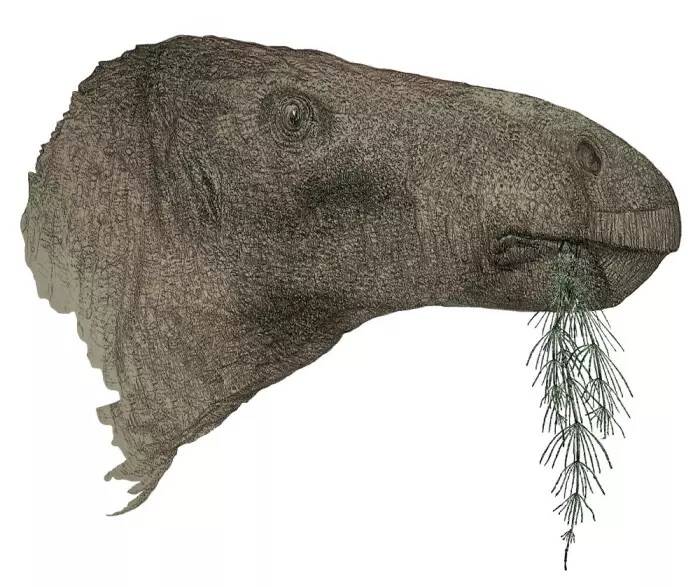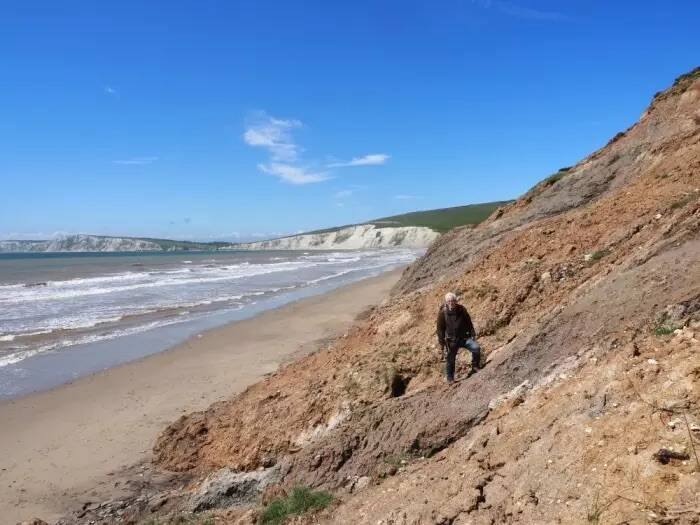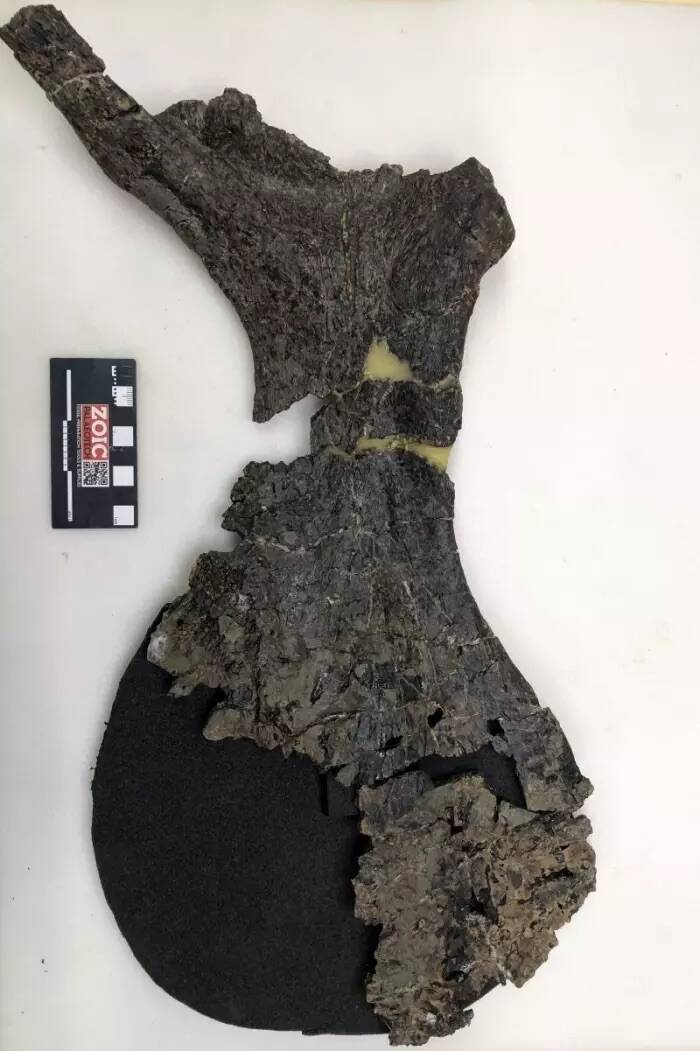Comptonatus chasei was a plant-eating dinosaur that was about the size of a bison and traveled in herds along England's southern coast 125 million years ago.

John Sibbick/University of PortsmouthAn artist’s impression of Comptonatus chasei.
As described in a recently published paper, the United Kingdom’s most complete dinosaur fossil in 100 years has been identified as a brand new species.
Roughly the size of an American bison, the species was named Comptonatus chasei for the avid fossil collector, Nick Chase, who found the creature’s remains on the Isle of Wight in 2013. Tragically, Chase died of cancer in 2019, but his legacy lives on in the newly described dinosaur species.
Identifying The U.K.’s Most Complete Dinosaur Fossil In A Century
Per a news release from the University of Portsmouth, Nick Chase was searching for fossils at Compton Bay on the Isle of Wight off England’s southern coast when he discovered the remains of C. chasei over a decade ago. Further excavations revealed 149 bones that make up the skeleton of the 125 million-year-old creature. In the time since, paleontologists have been analyzing the fossil — and now they’ve announced that it belonged to a previously unknown species.

University of PortsmouthJeremy Lockwood at the excavation site on the Isle of Wight.
C. chasei was originally believed to be a different dinosaur called Mantellisaurus, but as Jeremy Lockwood, a doctoral researcher at the University of Portsmouth, spent more time analyzing the bones, he came to realize it was something entirely new. The key, he said, were “certain unique features in its skull, teeth, and other parts of its body. For example, its lower jaw has a straight bottom edge, whereas most iguanodontians have a jaw that curves downwards.”
Also of note was the creature’s massive pubic hip bone, which Lockwood said was “like a dinner plate!”

University of PortsmouthThe massive pubic hip bone of C. chasei.
The size of the hip bone, he said, was “probably for muscle attachments, which might mean its mode of locomotion was a bit different, or it could have been used to support the stomach contents more effectively, or even have been involved in how the animal breathed, but all of these theories are somewhat speculative.”
Lockwood determined that C. chasei would have likely weighed around a ton, about the size of a male American bison. Evidence from nearby fossil footprints suggests the creature traveled in herds.
The newly described species also serves as a commemoration to the late Nick Chase, whose contributions to the field of paleontology cannot be overstated.
Comptonatus Chasei, A Dedication To Nick Chase’s Life And Career
Lockwood gave the dinosaur the name Comptonatus chasei, combining the location where it was found — Compton Bay — with the Latin word tonatus, meaning “thunderous,” and dedicating the second half of the creature’s name to its discoverer, Nick Chase.
“Nick had a phenomenal nose for finding dinosaur bones — he really was a modern-day Mary Anning,” Lockwood said. “He collected fossils daily in all weathers and donated them to museums… Despite his many wonderful discoveries over the years, including the most complete Iguanodon skull ever found in Britain, this is the first dinosaur to be named after him.”

University of PortsmouthThe late Nick Chase, who found the fossilized remains of C. chasei in 2013.
Max Greenslade, general manager for the National Trust on the Isle of Wight, called this an “extraordinary discovery” that “highlights the rich natural heritage of the Isle of Wight.”
“Nick Chase’s remarkable find and Jeremy Lockwood’s dedicated research are a testament to the incredible history waiting to be uncovered here,” he added. “We are thrilled to be part of this ongoing journey of discovery and scientific advancement.”
After reading about this newly discovered dinosaur, see our gallery of 31 mind-blowing dinosaur facts. Then, learn all about the Queztalcoatlus, the largest flying dinosaur of all time.





